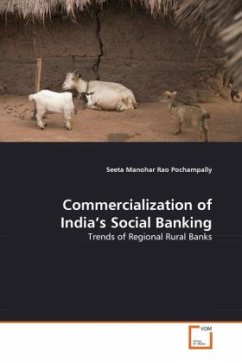India had experimented with the Gramin Bank concept much before the advent of the most acclaimed Bangla Gramin Bank. India's Gramin Banks, known as Regional Rural Banks (RRBs), have proliferated in no time, with more than 15,000 branches in the country. The success with which they delivered microfinance - small loans to the rural poor - was unparalleled anywhere in the world. This book makes a detailed analysis of the origin, growth and trends in the rural banking in India, in particular the RRBs. An in-depth analysis is made at village, subnational and national levels. The study focuses and proves that these banks did extremely well, during the first phase, when they worked with only the goal of achieving social profit. But, they put the interest of the poor on the backburner when the main goal became the profit earning. It focuses on their transformation from pure social banks to pure commercial banks and the tradeoff between the commercial viability and equity goals. This study will surely interest the academics, planners, policy makers, bankers, national and international organizations, students of development studies and practitioners of microfinance.
Bitte wählen Sie Ihr Anliegen aus.
Rechnungen
Retourenschein anfordern
Bestellstatus
Storno








